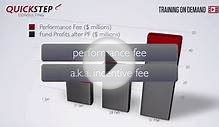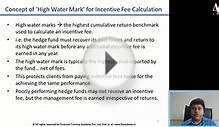
There’s too much to be amused about within the tale of Rev. Emmanuel Lemelson, the Greek Orthodox priest whom moonlights as a hedge-fund supervisor. Or is he a hedge-fund supervisor which moonlights as a priest? Difficult to state. Possibly everything relies on your denomination.
Very first, you will find the two rules he requires of their flock (speaking about their investors right here, perhaps not his congregation): Pray for the investment and neglect short-term overall performance, according to the profile of Lemelson in Tuesday’s Wall Street Journal. There is the epiphany Lemelson said he had when he found the "great book" - that could be “The Intelligent Investor” by Benjamin Graham. There’s the candid truth that when investment seeds autumn on rugged floor, also guys of fabric end stating comes back to industry-tracking services like BarclaysHedge.
And there’s also the overall sense that some members of the chapel are not exactly happy about this mansion-dwelling, motorcycle-collecting millionaire with a wife whom drives a Cadillac Escalade.
“He doesn’t fit in with us, " one church official told the report.
For certain, the hedge-fund neighborhood is most likely much more accepting associated with the extracurricular tasks of supervisors. Still, many may pause when they learn this about Lemelson: their performance charge is 25 percent!
“He doesn’t are part of us, " numerous hedge investment supervisors (most likely) exclaimed at this time.
The idea that hedge resources all collect a stereotypical management charge of 2 % and a performance charge of 20 percent has been dying a sluggish demise in recent years, specifically for smaller, more recent resources. Average performance costs for recently established resources final touched 20 % in 2007 but dropped to about 14 per cent since August with this 12 months, according to analysis firm Eurekahedge.

There are two main main trends behind this, in Eurekahedge’s evaluation. One of them is obvious together with various other not-so-obvious. Initially, while hedge funds as a bunch outperformed fundamental areas throughout the economic crisis, they nonetheless racked up nasty losings. Thus, their particular charges came under scrutiny. The other trend is a preference among big institutional people to position profit bigger hedge resources, causing smaller startups to reduce their particular charges in order to entice investors.
The point is, if you’re a manager of a tiny hedge investment, this story of a levered-up stock picker collecting a 25 % performance cost may come as encouraging news. But you’ll need certainly to think about one important concern initially: just what size cassock would you put on?
This column will not necessarily reflect the viewpoint for the editorial board or Bloomberg LP and its owners.
YOU MIGHT ALSO LIKE












